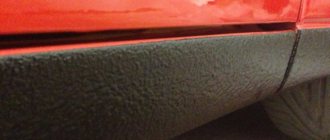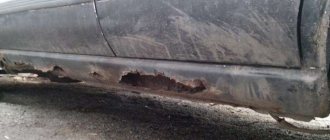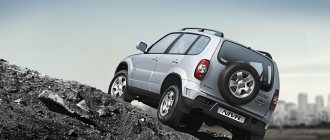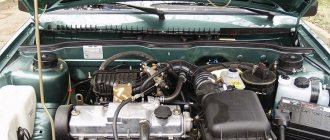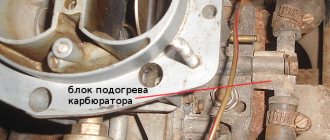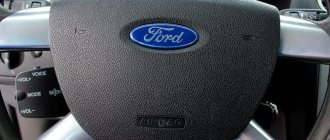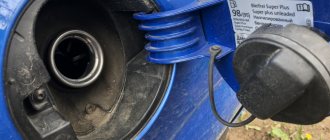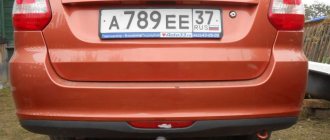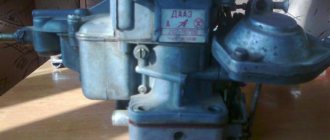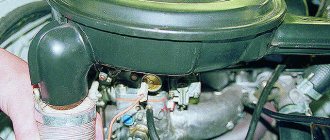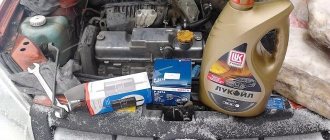The purpose of the fender liners is to protect the body from reagents and mechanical damage from gravel, and also to reduce noise. Standard plastic or felt ones do a good job of this, but they also have disadvantages. Due to their loose fit to the body, moisture and abrasive elements collect underneath them, as a result of which the element designed to protect the arches itself becomes a cause of corrosion.
Liquid fender liners will help solve this problem . They act simultaneously as anti-corrosive, anti-gravel and sound insulator. Therefore, they can be used either independently or in conjunction with standard ones. To choose the best liquid wheel arch liners, you should familiarize yourself with their types, as well as the nuances of application.
In this article you will find a rating of the TOP options and detailed information on how to treat car arches with a protective compound with your own hands.
What is fender liner treatment?
Protecting a car's fender liners includes a number of measures that will vary depending on what material the element is made of. Today, car fender liner protection is made from:
- steel or aluminum;
- polyethylene, ABC plastic, fiberglass;
- liquid compounds (“liquid fender liners”);
- films.
Each type has advantages and disadvantages and is used in certain cases. Before covering the fender liners of a car with a protective film or anti-corrosion agent, it is necessary to remove the part and treat the wheel arch. For plastic and fiberglass elements, anti-corrosion and anti-gravel are not used: the material is not subject to corrosion and does not react with salt reagents. The only thing that can ruin a plastic element is a crack caused by gravel. The structure can be strengthened with armored film.
Liquid fender liners Solid
If a car uses steel fender liners, it is recommended to treat them with an anti-corrosive agent to prevent metal oxidation and corrosion (rust quickly spreads from wheel arches to doors and sills).
Technological processing of steel parts is reduced to cleaning the part, degreasing, coating with anti-corrosion or anti-gravel.
Correct installation of lockers
Many cars have factory mounting locations for fender liners. Special plastic “bugs” are used as fastening elements. The use of self-tapping screws is permissible when attaching lockers to plastic elements (decorative threshold trim, bumpers). If processed correctly, self-tapping screws can be used as fasteners at the bottom of the internal cavity of the mudguard.
Never use self-tapping screws to attach the fender liner to the edge of the wing. Moisture is trapped between the plastic casing and the wing. In the place where the metal is exposed, rusting will inevitably begin, which, moving upward, will destroy the paintwork.
When you can't do without self-tapping screws
If another installation method is not possible or if holes have already been drilled in the wing before you, the metal must be protected. If there are no traces of rye in the area where the paintwork is damaged, prime the area with epoxy primer and paint it with acrylic paint from a spray can. Rusted areas must first be cleaned and treated with a rust converter. After drying, treat the inner cavity of the wing and the edge adjacent to the fender liner with anti-corrosion mastic (for example, Movilya). Also soak the self-tapping screw in mastic before screwing it in.
What are Dinitrol liquid fender liners used for?
The so-called lockers are designed to protect the metal body from various damages, including:
Rocks and sand flying out of wheels
Rainwater and dirt from roads
Salt and chemical compounds
All of them negatively affect the condition of the wheel arches, causing the formation of corrosion areas. Standard plastic protection is not always effective, so in addition to it or in the absence of it, you can buy special compounds from us that allow you to create liquid fender liners.
Which option should you choose?
Painting a car muffler: what paint to choose and how to use it correctly
The best way out is to properly care for your mechanical assistant. The fender liners cannot replace each other, they are only a temporary alternative. Let's say you bought a car that was not fully equipped. Until the right size, brand, or branded fender liners are found on sale or in a car service center, so that the car does not sit motionless, it is treated with liquid preparations.
For a specific model, they will help you choose the best composition at a car service center or retail outlet. After acquiring solid protection, you should not give up oil or bitumen treatment. Double body protection will not be superfluous.
Auto and motorcycleComment
Which method to choose
There are several ways to protect arches from the negative effects of water, dirt and stones. These surfaces are covered with fender liners, but even they cannot provide 100% protection of the arches from dirt and corrosion. Treatment with special compounds is required, the choice of which depends on the preferences of the car owner and his willingness to incur financial expenses.
How to treat car arches:
- Spillage of used oil. If you do it yourself, this method doesn’t cost a penny, but instead you have to pay for it in terms of lost time. To ensure protection against rust, you have to add oil 2-4 times a year. The disadvantage of this method is that used oil contains toxic substances that, when evaporated, have a harmful effect on the driver and passengers.
- Lubrication with inexpensive domestic products. They are made on the basis of bitumen, lithol, motor oils, kerosene, drying oil, and anti-corrosion additives. Treatment frequency is once a year. This costs more than used oil, but takes less time and effort.
- Use of expensive imported products. Experienced car enthusiasts believe that the only difference between such compounds is that they require updating less often. Fundamentally, they are no different in any way - they simply protect the metal from corrosion. But no anticorrosion agents will remove existing rust, and they will not repair holes in the metal.
On a note! Wheel arches in European cars begin to deteriorate after 3-4 years of operation, in Chinese cars - after 1-2 years.
Application principles
Liquid sound insulation of the body is mostly applied to the bottom of the car and wheel arches, that is, to those places that cannot be covered with standard sheet materials.
Various methods can be used to apply liquid sound insulation. For example, car repair shops use this method.
But still, the principles of application are very simple, so even an inexperienced car enthusiast can handle the job (without the involvement of expensive specialists).
The work itself consists of several main stages:
1. Wash and dry the surface to be treated. To do this, you can use special washers that supply water under high pressure. If you don’t have one at hand, one option is to go to specialized car washes;
- 2. Drive the car onto the overpass (or lift it on a lift);
- 3. Cover all body elements that should not be exposed to liquid sound insulation of the body and arches. This can be done using oilcloth, tape and newspapers;
- 4. Apply the first coat of primer. Try to do the work efficiently so that the liquid sound insulation of the body covers all the treated areas;
5. As soon as the primer is completely dry, liquid sound insulation of the body is applied (only the first layer for now). Please read the instructions on the product packaging carefully. Each manufacturer has its own polymerization requirements and unique product composition. But in practice, the polymerization period is often extended over time;
- 6. Upon completion of the polymerization process of the first layer, apply the second using a wide brush or spray (which is much easier and faster);
- 7. Be sure to inspect the bottom for existing gaps, untreated cracks and joints. If there are any, seal them.
POPULAR WITH READERS: What is electronic tinting of car windows
What are liquid fender liners on cars?
Liquid fender liners, what is it? These compositions are based on rubber resins, wax, and oxidized bitumen. To increase strength, fiberglass or rubber granules are added. After applying and drying the special composition, a durable, elastic and wear-resistant coating is formed. The noise inside the car will be reduced, and the effect of abrasives on the car body will also be neutralized.
Most often, markets offer liquid sound insulation in a can, with which you don’t need to do anything except apply it immediately. Anticorrosive liquid fender liners will immediately fill all microcracks on the surface of the wheel arches, thereby providing reliable protection against corrosion.
Nuance
Surely some craftsmen will want to give the soft fender liners even more perfection by adding some auxiliary components to them. This should not be done, because without proper understanding of the matter, you can do more harm than good. Thus, liquid fender liners will no longer be as effective as the manufacturer expected when developing them.
Types of wheel arch protection
Taking into account the realities of automotive life, several different effective ways to reliably protect car arches have been developed and implemented. In particular, they are equipped with plastic fender liners, as well as liquid fender liners. The car is also treated with a special substance, and the edges of its wheel arches, as well as their sills, are protected with an armored film. A special anti-gravel protection, one of the forms of which is rubber protection, helps protect against the destructive effects of gravel.
Anti-corrosion treatment based on bitumen
"Antikor" is a Russian-made product for maximum protection of any surfaces. "Dinitrol" - liquid fender liners. This unique composition is excellent as an anti-corrosion protection and soundproofing material.
Also, the formula in this product allows you to protect surfaces from chips that can form as a result of exposure to gravel or sand.
Compositions with metallized substances are designed to reduce the impact of active chlorine ions. The product is also a type of wheel arch protector. The product line provides maximum protection from any environmental influences.
Universal method
Universal wheel arch protection is used for various brands of cars, regardless of the country in which they were produced. At the moment, more and more automakers are moving to applying a universal coating to fender liners and openings while still on the assembly line. There is currently movement in several directions:
- Installation of standard fender liners.
- Special processing.
These are completely different methods of protection, but they have the same functionality, which is protection from mechanical stress, corrosion and noise. But despite this, the standard coating is made in the form of a rather light and fragile material, which either loses its properties or wears out within a few years.
What compositions do manufacturers offer?
The range of anti-corrosion products, given its diversity, is not so easy to understand. Classification by content helps to understand what formulations manufacturers offer - on what basis the product is made.
Bituminous
Bitumen mastics are a viscous material with excellent waterproofing. They are used for processing the bottom of cars and arches. Bitumen products can be mixed with gasoline, solvent, and white spirit.
Features and advantages of bitumen preparations:
- moderate cost;
- good sound insulation;
- wide operating temperature range;
- frost resistance;
- excellent anti-corrosion properties;
- Different application options are allowed - with a spatula, brush, spray gun;
- sold in different containers: you can buy the composition in a plastic canister, iron can or aerosol can.
In turn, there are several types of bitumen mastics:
- Shale. Made from bitumen. Plasticizer – mineral oil. Coating color – black. The downside is the low operating temperature range. The extreme lower limit is -20°C. This composition is not suitable for regions with cold winters.
- Polymer-bitumen. They contain polymers, are plastic, have a high level of adhesion, and last longer than other bitumen compositions. These mastics also contain corrosion inhibitors, rust converters, and solvents. Apply the composition at room temperature in 2-3 layers. Drying time – 24 hours. Retains properties over a wide temperature range – from -50 to +100°C.
- Bitumen-rubber. Bitumen provides moisture protection, rubber prevents cracking in frost. They tolerate frost well - can withstand temperatures down to -60°C. They are viscous mixtures that, when dry, shrink greatly. They dry quickly, are inexpensive, but have a thick consistency.
There are two types of bitumen-rubber mastics - cold and hot. The latter cost less, but require heating. They do not shrink during hardening and have a high drying speed. It is recommended to apply it at sub-zero temperatures.
Popular brands: Kerry, MasterWax, 3ton, Oil Right, Barrier and many others. Any polymer (polymer-bitumen) or rubber (rubber-bitumen) composition is suitable for processing arches. They are usually packaged in 0.5-1 liter cylinders or 0.8-3 liter jars. The cost of a unit of goods varies between 100-800 rubles.
Epoxy
Such products are considered the most durable among mastics, but they do not withstand impacts well, cracking and chipping at low temperatures. Epoxy mastics can be applied directly to oily areas, but they must be washed and dried.
Often the mastic comes with a solvent that is added before use. Recommended layer thickness is 2 mm. The composition dries completely within 24 hours. For wheel arches, for example, NoiseLIQUIDator brand mastic is suitable.
On a note! The most reliable element of wheel arch protection is polymer fender liners that protect the metal surface from corrosion. The material of this element is neutral to salt and other reagents that are sprinkled on roads.
Wax
A distinctive feature of such compositions is the absence of color. Compared to bitumen products, wax analogues are characterized by higher fluidity. The advantage of such mixtures is their high resistance to frost. Wax-based mastics contain corrosion inhibitors, but they work when the anti-corrosion agent is in the liquid phase.
When the product dries into an elastic waxy film, the inhibitors lose their anti-corrosion properties. The disadvantage of wax compositions is their low mechanical strength. They are more suitable for processing internal cavities.
Liquid fender liners
Manufacturers are offering a new approach to processing arches. Polymer rubber compounds are durable and strong, they are often used as an alternative to fender liners. The new products, as manufacturers claim, have a unique formula. The product molecules are able to penetrate directly into metal structures. “Liquid fender liners” are sold in cans.
The use of such products, unlike conventional polymer-rubber compounds, is very simple and does not require special conditions. The liquid is sprayed over the surface of the arches before installing conventional fender liners. The disadvantage of such means is insignificant noise insulation.
One example of “liquid fender liner” is “Rust-Stop”, which is applied by spraying. It is a black or dark brown liquid based on highly purified oil, contains various inhibitors, thanks to which it acquires unique penetrating and impregnating properties.
Ordinary oil always floats on the surface of water, but Rust Stop mixes with water, forming a stable emulsion that settles on the surface of the metal and literally “grows” into it thanks to special physical and chemical bonds. Such products can be used on any car, with different mileage and condition.
Preservatives
The most popular product in this category is Movil. It is well known to experienced motorists and is popular among them. The name of the product comes from the cities of Moscow and Vilnius, where the research institutes that participated in its development were located. Movil consists of ceresin, oxidized petrolatum, drying oil, imported corrosion inhibitors and white spirit.
Movil completely seals and insulates metal surfaces. It is not affected by air or moisture, and it contains an inhibitor that actively fights traces of rust.
The uniqueness of Moville is that it can be safely applied directly to mastic or bitumen insulating coatings. After treatment with Movil, the metal receives additional moisture-repellent protection. The downside of the drug is that it cannot be combined with synthetic mastics: it loosens them. But Movil is compatible with all types of paint and varnish coatings and does not have any harmful effects on them.
Review of manufacturers
Most often, the rear arches of the car suffer from corrosion. The main advantage of using this protective product is its ease of use and a good barrier on car parts from dirt and sand. This, in turn, prevents the onset of the corrosion process, which tends to quickly spread over the surface. This all leads to the need for serious and expensive repairs.
If you decide to purchase these products in a car store, you should pay attention to the following properties that the purchase must meet:
- the mass must be homogeneous;
- harmless to paintwork;
- heat resistance of the material;
- environmental friendliness of fender liners;
- non-toxic;
- there should be no peeling and homogeneous film;
- durability.
Liquid fender liners for cars
There are many offers on the modern market, so it is difficult for a beginner to make the right choice. If you are in doubt about what is best to buy, consult a specialist.
The price of liquid locker may vary. The cost is affected by the material of manufacture, the manufacturer, and the size of the fender liners. You can purchase lockers both foreign and domestic.
They first appeared in Finland. She is the founder of the method of sprinkling roads with salt. When the car body began to suffer from corrosion, they began to think about protection. The first fender liners were made of metal, which solved the problem of car rotting very mediocrely and not for long.
The most famous manufacturers:
- The Ukrainian brand MEGA LOCKER produces fender liners exclusively from low-density polyethylene. This product has high physical and chemical properties. Lockers from this manufacturer are very elastic regardless of weather conditions.
- PRIM liquid fender liners are made from styrene-butadiene rubber using functional additives and reinforcing fillers. Created on the basis of bitumen. Provide excellent anti-corrosion protection and ensure sound insulation of the body.
- Liquid locker Nippon Ace is an anti-corrosion sound insulator. Used to process car arches and underbody. Made from water-displacing compositions.
Liquid fender liners PRIM
Among the Russian manufacturers of this protection we can highlight Novolan, North-Plast, Lenpolymer, Bonus.
Whatever product you choose, only proper application or installation will provide reliable protection against sand and rust. If you doubt that during application you will be able to ensure correct surface treatment and reliable installation, contact the service center. Professionals will apply the compound in a short time, which will help protect body parts from rapid wear.
Wax compounds
This group is distinguished by its lack of color. If we compare them with bitumen mixtures, wax products are characterized by increased fluidity. They are great for applying to visible areas of the body. In addition, wax-based mixtures are more resistant to frost.
Among these products, we can distinguish compositions with the addition of bitumen. They are ideal for processing wheel arches. Since the density of such liquids is much less than bitumen, all work can be carried out under significantly lower pressure. As a result, the efficiency of such processing is much higher.
Available means
If the driver cannot afford to spend money on expensive professional products at the moment, then they can be created from scrap materials. Ordinary water, to which glycerin is added in a ratio of 3:1, will come to the rescue.
The composition is used to treat pre-cleaned wheel arch liners. It is worth understanding that the effect will be much less than from using specialized means, but still better than complete inaction.
Processing rules
When treating wheel arches with anti-corrosion agents, certain rules are followed that allow you to achieve the desired effect:
- Rinse the surface thoroughly. If you miss this moment, all further work will be useless, since the protective compounds will not adhere to the metal.
- Dry and degrease surfaces. If traces of fat or moisture remain, the effect will not be sufficient.
- Clean the metal from rust. Since the compounds used serve to protect and not to remove rust, in order to treat the wheel arches of a car, it is necessary to clean the metal from traces of corrosion.
- The arches must be carefully coated. You should not skimp on protective drugs. Read the instructions for what area of treatment the product is designed for.
If you follow the above rules, the efficiency of processing arches increases significantly.
Installation
It is better and easier to install protection for wheel arches or fender liners when the car is jacked up or on a lift. For convenience, it is better to remove the rear wheels. Then you should clean the arch. To do this, remove dirt from the surface of the body with a metal brush. After cleaning with a brush, you can blow out the arch with compressed air. It is not necessary to wash your car with water and detergents.
Each fender liner is carefully tried on. The part must fit as accurately as possible into the arch of the car. If there are slight discrepancies in the relief, then you can adjust the part using heating. When heated by a hairdryer, the plastic is easily deformed and takes the desired shape. After this operation, the tires will no longer touch the lockers even with the front wheel fully turned. On the rear wheels there are usually no problems with fitting the lockers.
Noise insulation of wheel arches: insulation of fender liners and car arches
The greatest amount of noise enters the car through the fender liners or what are also called wheel arches. First of all, the noise comes from the tires themselves, the suspension, as well as various stones and sand on the road surface. The higher the speed, the louder the noise. Manufacturers offer several options for completing the soundproofing package:
- minimum;
- average;
- maximum.
For a complete picture of the installation of sound insulation, we will consider the maximum configuration. In this case, soundproofing material is laid not only on the internal, but also on the external walls of the wheel arches. Although this is not possible with every car. Therefore, first, let’s take a good look at vehicles. We determine: the presence of lockers (plastic or metal protection); measure the distance between the locker and the wheel arch; We examine the arches in the cabin to determine the difficulty of dismantling the trim, measure the distances between the plastic trim and decorative elements. Depending on the result obtained after the study, we will consider the selection of materials:
Option 1. Sound insulation of the internal and external parts according to the maximum possible set:
- The first layer is vibration-proof, 3-4 mm thick. There are materials whose thickness is 1-2 mm. and their characteristics correspond to average materials of 3-4 mm, but, as a rule, such materials are more expensive because have not only a thinner layer, but also a reduced mass. Each arch will require at least one sheet.
- The second layer is a soundproofing layer. Preference in choosing a material should be given not only to the one with the greatest thickness, but also with thermal insulation properties. Of course, the thicker the “pie”, the better, but also 8 mm. Quite suitable. You must purchase at least 1.5 sq. m. or comparable to the size of the first layer.
- External wheel arch treatment. The outside of the arch can be processed only after all internal work has been completed. For the outside, it will be enough to additionally treat it with “liquid noise insulation”. These include various anti-noise mastics, aerosol materials - “liquid fender liners”. They usually contain bitumen or liquid polymers, or both materials at the same time. Bitumen is the most inexpensive materials. Polymer ones will cost more, but they are more effective.
Material consumption must be looked at in the instructions. Preparation of the surface to be treated is mandatory; it includes removing the old layer of sound insulation, cleaning the surface from dirt, degreasing and only then applying the material, otherwise it will not last long. To work, you will need to remove the wheels and protect the body parts with film (bumper, suspension parts, and other elements that may get sprayed with aerosol or mastic). Be sure to use a respirator, and the room in which the work is carried out should be well ventilated.
Option 2. Soundproofing the outer part with a missing protective arch.
For cars where protective lockers are not provided, only liquid sound insulation is possible. What materials to use to do this work are described in the first option. We do not recommend that you glue vibration insulation to the unprotected outer part of the arch because... First of all, it won't last long. Secondly, moisture will appear in the places of delamination, which will increase corrosion. It should also be noted that both mastic and aerosols take quite a long time to dry - up to 12 hours, during which time it is better not to use the car.
Option 3. Sound insulation of the external part with a locker (arch protection)
For cars with protective wheel arches or for those who planned to install it, the third option is suitable. We remove the lockers, then completely remove the factory standard insulation and anti-corrosion coating. Surface protection is mandatory for all elements. We apply liquid insulation in the form of enamel or aerosols. By analogy with the first option. Be sure to glue the Lockers with a special material 2 mm thick. The vibration-proofing layer can only be fixed if there is space between the body and the already applied layers. The fastening is also very important; it may need to be strengthened, otherwise the structure simply will not withstand an unplanned load. It is better not to use self-tapping screws for fastening; corrosion may appear and the wheel arches will gradually begin to collapse; it is better to choose reinforced plastic fasteners for standard places. In addition, there are ventilation holes on the lockers; they cannot be sealed with sound insulation. The surface of the locker to be treated must be degreased. You need to purchase at least 1 sheet for each locker being processed.
To independently install the purchased material according to selected work options 1 or 3, you will need additional tools:
- Mounting roller;
- Technical hair dryer;
- Knife and scissors;
- Clip removal tool;
- Degreaser or solvent;
- Tool set (screwdrivers, wrenches);
- Spatula and rag
To apply “liquid noise insulation” to the outer part of the arch yourself, you will need:
- Brush for applying mastic;
- Degreaser or solvent;
- Protective film and tape;
- Spatula and rags.
However, if you do not have confidence in your own hands, then it is better to entrust this work to professionals. Poor-quality installation of sound insulation will not only not fulfill its purpose, but may also have an aesthetically unsightly appearance. Professionals will carry out all the work quickly and accurately, saving the client’s efforts and resources.
Sound insulation without “lockers” (fender liners): work order
If the car does not have plastic fender liners installed, then the meaning of external sound insulation comes down to finishing the metal surface of the body.
Proceed like this:
- Clean the arches from dust and dirt. The best option is to use a washing machine that supplies high pressure water.
- Let the metal dry.
- Degrease the surface using nitro solvent.
- Use liquid or classic compositions to impart soundproofing properties. The choice of options is wide. If you don’t have a large sum on hand, give preference to multi-bitumen mastics. If there are no problems with money, then you can take a more expensive composition.
- Before applying the composition, cover the parts that you do not plan to cover with soundproofing material. Use plastic film for these purposes (fix it with tape).
- If you decide to use liquid sound insulation for arches, apply the first layer of mastic and let it dry.
- Treat the surface with a second layer, roll the product and dry.
Please note that the number of coats applied to the body may vary. This information can be easily gleaned from the manufacturer's instructions.
It also reveals the drying features of each applied layer.
Some “craftsmen” recommend making sound insulation in layers, that is, applying mastic, Splen, mastic, and so on (in a circle).
In this case, Splen will quickly peel off, and corrosion will not be long in coming.
Liquid fender liners or plastic, which is better to choose?
Which fender liners are better? Well, let's look at the specific advantages of liquid fender liners over rigid products:
1
. In the process of applying liquid fender liners, the appearance of places with crevice corrosion is eliminated, since there is no need to make holes in the body to fix the protection.
2
. Excellent resistance to wind, moisture and low temperatures.
3
. Easy to use.
4
. Absolute environmental safety.
5
. Can be used on almost any car.
6
. If there are any holes or parts in the wheel arches, they will not be blocked when using liquid fender liners.
The only thing that can stress the unlucky master is the correct process of applying the composition.
Armored film
This innovation appeared relatively recently, but has already gained considerable popularity. Abroad, the use of armored film, which perfectly protects especially vulnerable areas of a car, is practiced on the assembly line, preserving sills, aprons, bumpers, glass lamps and headlights, and other important parts of the body and interior. Such films come in different thicknesses and also give an amazing positive effect. Many drivers are attracted by the fact that they are invisible from the outside and do not spoil the design or aesthetic impression of the car. A certain disadvantage is sometimes called the fact that it is very difficult to install such a film on your own - this can only be done by experienced specialists in a specialized place.
How to process arches
To cover the arches from the inside, a lift, like at a service station, is not needed. When doing the work yourself, it is enough to have an inspection hole or a jack.
Procedure:
- Remove the wheel and wheel arch liner.
- Cover the washed and dried arches with a protective compound in 2 or 3 layers. After each layer, take a break - 10-20 minutes so that they dry a little.
- When the last layer has dried, put the wheel and fender liner back.
- Repeat the operation for the other three wheels.
To work, you will need 5-6 hours and a high-quality protective composition - bitumen or wax mastic, or other protective agent.
Is it possible to do this work yourself?
As many car enthusiasts claim, the entire range of activities can be carried out in a garage.
All you need for this:
- Several hours of personal time;
- Knowledge of the technical part. Before starting work, study what, how and where you will glue;
- Availability of necessary materials (purchase in advance). We will consider below what is required to complete the work;
- A certain amount on hand. The level of costs depends on the quality of the selected products. On average, processing four fender liners will require 1500-2000 rubles (the most optimistic forecast).
Tips for choosing a protective composition
Dozens of all kinds of anti-corrosion agents for treating arches are sold on the market. They differ in price, composition, effect, duration and other features.
Protective compounds for arches should have the following features:
- Super strength. Anti-corrosion compounds for wheel arches are regularly subjected to “bombardment”; they experience the constant abrasive effects of sand and fine gravel, and therefore must maintain high strength characteristics throughout the entire period of operation.
- High thixotropy. The protective layer created resists abrasion. The composition does not crack or chip, but seems to liquefy and dampen the impact energy.
- Salt resistance. Arches are exposed to deicing agents. Only salt-resistant products will provide reliable protection in winter.
The main condition when choosing a mastic is that it reaches a solid state when drying.
On a note! High-viscosity anti-corrosion compounds are applied using special guns, which make it possible to apply a layer of the required thickness to the surface, foaming it to increase sound insulation properties.
Each car enthusiast decides for himself how best to treat the body of his car. If you expect to use the car for more than 5 years, regularly treat the arches, bottom, hidden and internal cavities with protective agents. And to make their use as effective as possible, choose an anti-corrosion composition taking into account the regional climate and driving mode.
What if the car has been in use for more than 6 years?
Here, guys, it is better to install fender liners, the point here is this - the composition of polyvinyl chloride, bitumen or wax, wears out over time, sometimes even falls off. Therefore, the metal is left alone with the harmful environment. Again, sand and salt on the roads act as an abrasive compound that wears off not only the protective compound, but also paint and even primer from the bottom. Therefore, metal left without protection very quickly rusts and then rots. So they will come in handy here, as they will not allow sand and salt to wear off this composition and will save you from any external influence.
And in general, after six to seven years of operation of the car, it is necessary to carry out preventative maintenance on the body, it is advisable to once again apply a protective composition to the bottom and under the wings of the car. Install protective fender liners, treat hard-to-reach cavities, etc. This way, you will extend the life of the car body by several more years.
User reviews
One of the car owners spoke very flatteringly about this technology. So, it was decided to install protection for the wheel arches on his wife’s Lanos. But there was no desire to make holes in the body for fastenings for plastic protection.
We decided to use this new technology. The choice was made in favor of Prim products. Liquid fender liners from this company are considered one of the best. The product was applied very quickly. This protective layer is practically invisible. After treatment, the car has been driven on various roads, and the protective layer looks as if it were brand new.
Another owner writes that he was pleased with the result of applying Dinitrol to his car. The car became quieter when driving.
Another advantage of this technology is that there is no need to drill holes. For a high level of protection, it is enough to apply good liquid fender liners to the surface - and you can forget about corrosion and noise.
Cutting car arches
Colors and paint consumption with hammer effect: how to properly treat metal surfaces
This is a method used to widen the wheel arches of a car. Often practiced on Nivas to install larger wheels and improve the off-road properties of the car. To carry out such a procedure, it is necessary to significantly change the design of the openings to be able to install large wheels that would not rub against the structural elements during movement.
Important! The cutting of arches must be carried out by specialists at a station provided for this purpose.
The protection of wheel arches, although not widely used among motorists, can have a good effect on preserving the properties of the coating from mechanical damage and corrosion.
Lockers made of aluminum and zinc
Aluminum and galvanized lockers were very popular in Soviet times. Naturally, they did their job, although they brought (and still bring) a lot of inconvenience to drivers. One of the weak points of such lockers was the presence of a rubber seal. Gradually, it wore away the protective coating of the wheel arch, resulting in corrosion. In addition, they could burst from stress while moving. A suddenly deformed locker (sometimes literally out of the blue) could create an emergency situation, which was repeatedly recorded in practice.
There are many ways to protect the wheel arches of a car. Each of them has its own clear advantages, as well as some weaknesses. Which option to choose is a matter of taste and desire of the car owner himself. Only one thing is indisputable - such protection must certainly exist! Good luck with your choice!
#Protection#Wheel arch#Wheel
The best anti-corrosion agents for hidden surfaces
Among such anticorrosives, those that have an oil base stand out. Also available with paraffin content. This ensures a constant liquid form of the composition, which allows you to thoroughly treat even microcracks that are difficult to see with the naked eye.
In addition, such products have a long service life, but they lack mechanical strength. For this reason, they are not used for exterior body treatment.
Hi Gear - the best product for finishing seams
The base is rubber, so this type of coating significantly increases the service life of body parts. During processing, the surface is covered with a kind of film that has excellent water-repellent properties. The product not only has good anti-corrosion properties, but also provides protection against chemicals used to treat road surfaces. Often used to protect seams and joints.
The advantages include the following properties:
- Contains corrosion inhibitors.
- It has good noise reduction and thermal insulation properties.
- Thanks to its excellent elasticity, it does not crack even after long periods of use.
- Suitable for surface treatment of welds of any type.
Consumers also note some disadvantages of this product:
- During initial treatment, it is necessary to apply a double layer of protective agent.
- It has low effectiveness if the surface being treated is heavily rusted.
The product is in high demand among consumers who have new cars. There are also many positive reviews from car owners with used vehicles in good condition.
Noxudol – providing excellent sound insulation
This product was developed by the Swedish manufacturing company Auson a long time ago. This composition differs from other similar materials on the market in that, in addition to reliable protection of body elements from corrosion and mechanical influences, it provides high-quality noise absorption.
The product is produced in two forms - one is intended for individual use, the second is used mainly at service stations. The substance is suitable for treating any body part, including internal elements, underbody, etc. Mainly used to coat internal parts. The main disadvantage is the long drying time of the product. Since this anticorrosive agent has a very thick consistency, individual processing becomes inconvenient and time-consuming.
According to user reviews, this tool has the following advantages:
- A wide range of protective substances for processing metal elements of a car.
- Availability of special quality certificates, production in accordance with all European standards.
- Possibility of purchasing containers both for individual use and for large professional works.
- Good level of sound insulation.
The disadvantages include:
- It takes a long time (up to three days) to dry after initial processing.
- Before processing, it is necessary to carefully insulate the electrical wiring.
A large number of buyers choose anti-corrosion products of this brand.
LIQUI MOLY – excellent value for money
These products are widely known both among Russian car owners and abroad. The advantage of this anti-corrosion agent is that it has an optimal price, which is combined with high quality. The product has excellent protective properties and is elastic.
The most effective solution would be to apply two layers of this anticorrosive agent. The product was produced in Germany. In addition to anti-corrosion products, the manufacturer offers a wide range of various products for caring for metal parts of cars.
Among the positive qualities, consumers note the following:
- Has excellent anti-corrosion properties.
- High adhesion - adheres perfectly even to those surfaces that have damage from rust and others.
- It has good elasticity.
- With high quality it has an optimal price.
There are also small disadvantages:
- For high efficiency, a two-layer coating is required.
- Susceptible to dirt and dust, has no repulsive properties.
Perhaps the most popular product for internal processing among a huge number of consumers, including in the professional circle.
Causes of corrosion damage
Drivers should understand that externally treating doors with anti-corrosion agents will be useless if rust destroys the metal from the inside. The cavity, which is located under the casing, serves as a pocket for the side glass, laid cables, sensor units, etc. must be protected from corrosion as thoroughly as the visible part of the door. Causes of corrosion:
- poor anti-corrosion treatment of metal;
- electrochemical process;
- systematic contact with water;
- anti-ice reagents.
Anti-corrosion treatment involves not just coating the doors with bitumen mastic or liquid paraffin, but also inspecting the metal first. If there are already traces of rust on the door, then the use of a preservative that stops the spread of corrosion will not be sufficient. It is necessary to clean the damaged area, prime it, and protect it with anticorrosive.
Electrochemical corrosion occurs at welding sites because the integrity of the metal is damaged at the points of contact between the aluminum patches and the steel.
If the drainage holes in the threshold are clogged, then there is always moisture inside the door, which contributes to the oxidation of the metal and rapid rotting. At the same time as the door, the thresholds begin to collapse, water gets into the cracks between the lining seals, penetrates into the inner frame, and destroys the body from the inside.
In winter, city streets are sprinkled with a salt composition so that the ice does not freeze in blocks and makes it easier to remove. Salts and aggressive chemicals, getting on the paintwork of the body and remaining in the cracks, destroy parts much faster than water. This is facilitated by the presence of scratches, chips, dents with damage to the paintwork.
